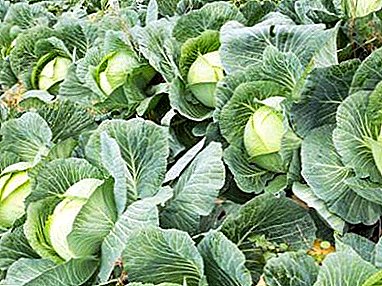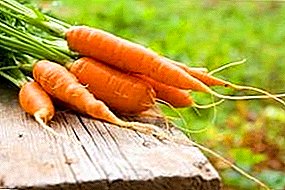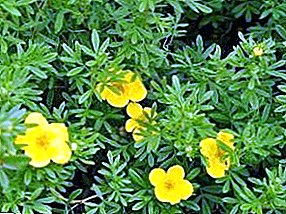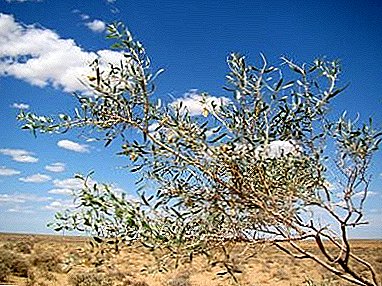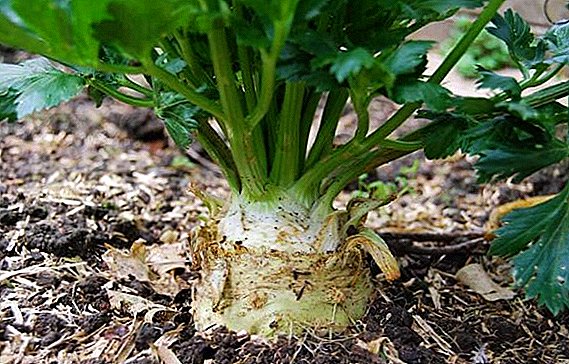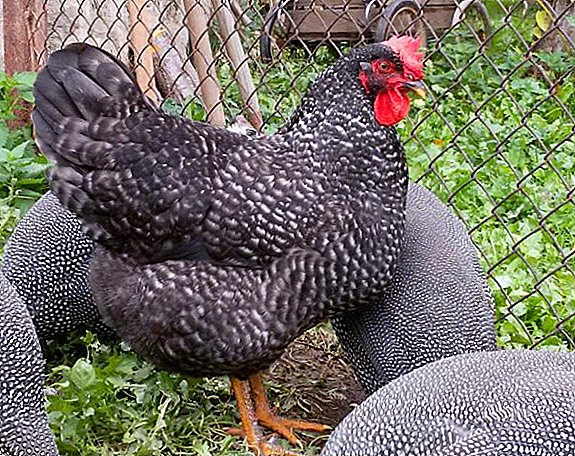 The Kyrgyz gray breed of chickens is a relatively recent acquisition in the poultry industry. This meat-egg breed has proven itself not only for its practical significance, but also for its attractive, even classical, appearance. It was the Kyrgyz gray that became the cartoon embodiment of the famous Ryaba Chicken.
The Kyrgyz gray breed of chickens is a relatively recent acquisition in the poultry industry. This meat-egg breed has proven itself not only for its practical significance, but also for its attractive, even classical, appearance. It was the Kyrgyz gray that became the cartoon embodiment of the famous Ryaba Chicken.
A bit of history
Gray Kyrgyz chickens are domestic wealth in farming, because they were bred in the Soviet Union. It cannot be said that they have a rich and long history of origin, since this breed of chickens appeared not very long ago.
Read more about the most popular breeds of chickens: Ayam Tsemani, Bielefelder, Kuban Red, Indokury, Hubbard (Isa F-15), Amrox, Maran, Master Gray, Dominant, Redbro, Wyandot, Faverol, Adler Silver, Rhode Island, Poltava, Minorca, Andalusian, Russian White (Snow White), Hisex Brown "and" Highsex White "," Pavlovskaya Golden "and" Pavlovskaya Silver. "
Breeding works on chickens were conducted on the territory of the former Kirghiz SSR at the Kyrgyz Institute of Livestock. The breeders of that time set a goal: to bring out the practically universal chicken of meat and egg type, which will grow quickly, well be carried, gain weight and, moreover, will be unpretentious to the conditions of detention.  It should be said that breeders succeeded. The Kyrgyz gray was obtained by crossing several meat and egg breeds - striped and white Plymouth, New Hampshire and White Leghorn. The selection work did not end there, but it was already carried out only inside the breed: its meat and egg qualities improved, the egg mass increased, the safety of representatives became more reliable, and reproduction became faster.
It should be said that breeders succeeded. The Kyrgyz gray was obtained by crossing several meat and egg breeds - striped and white Plymouth, New Hampshire and White Leghorn. The selection work did not end there, but it was already carried out only inside the breed: its meat and egg qualities improved, the egg mass increased, the safety of representatives became more reliable, and reproduction became faster.
Today, the livestock of this breed is slightly less than 250 thousand individuals. These are the data of the agricultural census, conducted in the early 90s. Moreover, the largest number of chickens was raised in Kyrgyzstan. In Russia, they are mostly known from children's fairy tales, and they are quite rare.
Characteristics and features
Thoroughbred representatives differ in characteristics inherent only in this breed, and by which they can be distinguished from other breeds of poultry. 
Exterior
The appearance of the gray Kyrgyz is characterized by the following features:
- head is medium sized, rounded;
- eyes - large, expressive, reddish-orange color;
- crest - small or small, in the form of a leaf, bright, reddish-scarlet;
- earlobes - bright red, scarlet;
- torso - conical, medium-sized, appears voluminous;
- the abdomen is voluminous and well developed;
- legs are medium;
- the plumage is rather loose, moderate, not thick, because of which the apparent volume of the bird is created, and it seems larger than it actually is.

Weight in chickens of this breed is moderate: in chickens - from 2.5 kg to 2.7 kg, and in roosters - from 3 kg to 3.5 kg. Moreover, they are growing and gaining a living mass rather quickly - by the end of the second month of life, young animals already weigh about 1 kg.
Did you know? In order to lay eggs, chicken cock is not needed at all, because the male performs the only function - fertilization.
Color
The color of the Kyrgyz gray chickens is catchy and beautiful: they are speckled, bright, striped. White and black stripes alternate on each feather, creating a common colorful look of plumage. 
In females in color there are only 2 colors - black and white. But here roosters in the neck and neck can be found reddish and golden feathers.
Chickens are born in a black cannon, white spots on the tummy and breast are possible. But what is remarkable about them is that they are autosex. This means that the day-old cubs have a white spot on their heads, according to which they determine the sex of the baby - the chickens have it, but the cockerels do not. This method turns out to be true in more than 60% of cases.
Temperament
By temperament, the breed of Kyrgyz gray chickens is very calm. These birds are leisurely in activity, although their movements are moderately active. They are curious about everything new, but they don’t show a desire to leave the hen house. Peace-loving and not aggressive, do not enter into fights between themselves and are well received next to the birds of other breeds. Not fussy and not conflicted. 
These chickens are friendly to people, easy to go to contact, they are not afraid of a person.
In the new environment, they behave cautiously, so they do not show a desire to leave their usual place, they are more comfortable in familiar surroundings. We can not be afraid that the birds will flee.
Such a calm and peaceful disposition makes the Kyrgyz hens one of the most beloved in farming circles.
Puberty and annual egg production
Kyrgyz gray can not be attributed to the early maturing chickens. Their average puberty comes on the 6th month of life, although occasionally it occurs much later - only on the 8th month. 
In the first year, egg production is usually 170 eggs. In the future, the clubs carry eggs, usually in the same quantity, which sometimes can vary from 150 to 180 pieces of egg production per year.
It will be interesting for you to learn what to do if chickens rush badly, the period of egg production in pullets, what vitamins are needed for laying hens for egg production, how to increase egg production in winter and the rating of egg breeds.
The eggs of the Kyrgyz gray are rather large - their weight often reaches 60 g. The color of the shell is light brown.
The fertility of eggs is very high - from 90 to 96%, and hatchability - from 85 to 95%. Offspring are usually born healthy, viable and strong. Therefore, the safety of chicks is also high - about 97%. Thus, we can talk about the good reproductive qualities of the Kyrgyz gray breed of chickens. 
Hatching instinct
One of the drawbacks of Kyrgyz chickens is that they are not very good mothers. Their instinct is poorly developed and appears more like an exception than a rule. Therefore, to obtain offspring is recommended to use incubators.
Conditions of detention
The Kyrgyz gray is distinguished from other breeds of poultry by exceptional unpretentiousness in its content. These chickens are hardy, they are able to withstand sudden changes in temperature and their upper and lower bounds.
They easily endure both cold, harsh winters, and hot summer heat.
Important! High endurance and adaptability to weather conditions makes it possible to keep the Kirghiz not only on the plains, but even in the highland areas.

Coop Requirements
Kyrgyz breed is quite unpretentious to the conditions of detention. However, if these hens are provided with adequate comfort conditions, they will regularly and in large volumes give egg products and gain weight well.
- The coop is built in a well-lit place. There must be access to diffused sunlight, but without scorching direct rays.
- Do not put the chicken coop in places that are heavily purged, where there are drafts, or that are flooded during the rains. Although Kyrgyz people tolerate low temperatures well, they don’t like drafts, so it’s better to protect them from blowing.
- The height of the house should not exceed 180 cm. This height is due to the fact that a larger room is difficult to warm in the winter period.
- The area of the floor is calculated from the fact that 5 chickens require at least 1 square meter. m space.
- To the house for chickens must necessarily adjoin a walking yard, into which birds will have free access.
- The shed should be strong and insulated for the winter. It is not necessary to warm it up with heating if the winters in your region are not dry, as Kyrgyz feel well and with moderate coolness. It will be enough just thick walls and a large layer of warm bedding (at least 10 cm) of sawdust and hay mixed with sand on the floor.
- The ideal temperature in a chicken coop is considered to be a temperature ranging from 11 ° C to 22 ° C. It is desirable that this temperature was maintained year-round.
- Lighting is important for egg production. It will be more if the hen daylight lasts about 19 hours. To do this, the chicken coop must be equipped with tube lighting.
- Well, if there are a couple of windows in the barn. They will provide daytime lighting and periodic airing.
- Extras are needed as the windows cannot be constantly open, and moisture and dampness can accumulate in the room. The hood will help avoid this problem at any time of the year.
- Be sure to have a manhole to exit chickens in a walking yard. Usually, the manhole is constantly open throughout the day, which gives the birds the opportunity to go out at any time. The width of the opening must be at least half a meter, and the height may be even greater.
- Perches - the first necessity for chickens. On them, the birds sit, sleep and just spend time. The number of perches should be determined, leaving the number of livestock and the fact that there is about 20 cm of free space per bird. The lowest perch should be located not less than half a meter from the floor. The rest can be located above the speed or be around the perimeter of the room. The main thing is that one perch is not under the other, otherwise chickens will soil each other.
- No less important attribute of any chicken house - nests. Chickens prefer to lay eggs in quiet, dark and secluded places. It is important that the nest is comfortable for the club, otherwise it can be carried in any corner of the hen house that she likes. To avoid this inconvenience, the nests should be arranged in special boxes with such parameters: height - not less than 40 cm, width - not less than 60 cm. The bottom of the nest should be lined with a small layer of straw, hay or sawdust. The number of nests is calculated on the basis of the fact that 1 nest is required for 5 Klush.
- Additional equipment of the chicken coop - feeders, drinkers and ash baths (wooden boxes filled with a mixture of sand, clay and furnace ash).
- Cleaning in the house should be carried out regularly in order to avoid damage by parasites and pests. All feeders and drinkers should be clean, they are regularly washed and disinfected. The floor is kept dry and clean, droppings, leftover food and dirt are removed, litter is replaced with a new one as it gets dirty.

Did you know? Egg production directly depends on daylight. With a lack of light, the wedge can generally stop rolling. Sometimes a chicken does not lay an egg until the sun rises or the light comes on.
Walking yard
Walking yard - a prerequisite for keeping poultry. In it chickens walk, lead an active lifestyle.
- Access to the courtyard should be free.
- It is better to choose a place that is not flooded during rains and thaws, is not blown by drafts.
- The size of the courtyard should be based on the fact that one square hen is needed per hen. m of free space.
- The fence of the courtyard for the Kyrgyz breed may be low, as these chickens do not fly, do not jump high, and do not show a desire to leave a familiar place.
- A place for walking, as well as a poultry house, must necessarily be equipped with feeders, drinkers and ash baths.

Feeders and drinkers
Feeders are usually long and narrow crates where food is poured. Their length should go beyond the fact that one bird requires at least 15 cm of space.
Agree that the benefits of comfortable chickens are enormous. Experienced poultry farmers are advised to learn how to properly build, equip, choose a chicken coop, make a perch, nest, ventilation, and also how to choose and use the fermentation bedding for chickens.
It is best suited for chickens feeders, in which there are special turntables. These devices do not allow birds to climb inside the feeder and rake, scattering, feed.
Birds should be placed freely near the feeders, without crowding. A large number of these devices will allow the entire herd to get food at the same time, which will help avoid the occurrence of fights. 
Drinking bowls are also obligatory in the poultry house and adjacent courtyard. For them, usually take a capacity of not more than 5 liters in volume. If the trough is made of a pelvis or bowl, a large stone or cobblestone can be installed in the center - this will prevent the birds from accidentally getting inside the trough and will not allow chickens to turn over the container.
The water in the drinker changes regularly and should be freely available. It is necessary to monitor the purity and freshness of the water, change it daily and add water as needed, which is especially important on hot summer days.
How to endure cold and heat
The Kyrgyz gray breed of hens equally well tolerates both heat and cold. They are resistant to sudden and severe temperature changes, rarely catch cold. Feel good in the highlands. They can be bred even in the harsh climatic zones of Russia. 
Did you know? Sometimes eggs can be abnormal - with two or more yolks, completely without the yolk, with an excessively thin shell, with a wrinkled shell, deformed eggs. The appearance of such deviations depends on the age of the chicken (the younger the female, the greater the likelihood of a defect) and the disturbance of its content (stress, unbalanced diet).
Moult
The process of molting in Kyrgyz begins in the fall and lasts about 2-3 months. At this time, the chickens are actively losing feathers, peeling off and becoming aesthetically unattractive. However, do not despair - after the end of the molt their feather cover will be restored, and they will find their former attractiveness.
During this period, the birds need to be well fed, enriching their diet with nutritious food. They also need to be protected from drafts and hypothermia, so that the clubs will not catch cold. 
What to feed an adult flock
The diet of adult Kyrgyz grays should be balanced and nutritious. It must include:
- Cereals - wheat and oats, barley and rye, corn and legumes. Grain mixtures can be used. Such food is appropriate at any time of the year.
- Grass and greens - compensates for the lack of vitamins. In winter, you can give germinated cereals or add dry herbs in the mash.
- Periodically, you can feed the animal protein. It can be fish and meat wastes, maggots, worms and dairy products, cakes and oil cakes.
- To replenish calcium, birds are given bone or fish meal, chalk, and small shells.
- Gravel, crushed eggshell and crushed bones are necessary for the digestive tract to work well and the products are well digested. Still such additives fill a lack of mineral substances.

An adult flock is fed 3-4 times a day. And the first feeding should be in the morning as early as possible, and the last - as late as possible before bedtime. The second and third feeding is carried out at approximately regular intervals.
Chickens should receive a diverse and nutritious food, which consists of corn, wheat, barley, oats, carrots and boiled potatoes.
Breeding chicks
Breeding young Kirgiz gray breed of chickens is not very burdensome and practically does not differ from that of other breeds of chickens, but there are some nuances.

Incubation
Since the incubation instinct of the Kirghiz is poorly developed, an incubator may be needed. If the hen incubates the offspring itself, it needs to provide warmth, comfort and peace. You need a shaded nest in a quiet place with direct access to food and water.
Important! Milk is not recommended to be given to adult chickens or chickens, as from it birds can have indigestion.
The incubation instinct in chickens is most pronounced in the spring - this is the time when the hen is planted to hatch eggs. The Klusha, which is ready to hatch chicks, preliminarily begins to linger in the nest for a long time, does not wish to leave it, it constantly clucks.
In order to understand whether the instinct of hatching will be strong enough, the chicken is first checked - a fake egg is laid in the nest for a couple of days. If the klusha has not left the nest these days, then it can be expected that she nests. Then under the hen they put already real, hatching eggs. But if the incubation instinct is weak and fades away, then the hen will quickly leave the nest and stop quagging. 
In the event that the hen begins to hatch chickens, you should:
- Do not disturb the chicken in the early days so that it does not give up its occupation.
- Control the mode of the bird so that it leaves the nest for drinking, eating, walking.
- When the hen is gone, the eggs are covered to conserve heat. The walk should not last more than a quarter of an hour.
- While the wedge walks, you can inspect the eggs, remove the crushed, clean the litter.
- Over the entire period of incubation several times you need to check the nest for the presence of parasites.
- Newborn chickens appear approximately on the 20th day after the start of incubation. It is important to ensure that the hen does not leave the nest after the first cubs have appeared.
- The first chicks are left next to the hen for a couple of hours to dry and warm. Later they are taken into a separate box until the whole brood hatch.

Did you know? On the formation of eggs inside the body of a chicken takes only a day.
Care for the young
Chicks of the Kyrgyz gray breed are born healthy and strong. They are viable and have a high survival rate. Chicks need additional heating only in the first few weeks after hatching - the temperature should be around 26 ° C. In the future, they may be in the usual temperature for adult chickens.
Chickens can live in a common henhouse, as adults do not offend them. Они быстро растут и крепнут.Like all birds, chickens need cleanliness, comfort, access to sunlight and fresh air, walks outside in the warm season, a balanced diet, clean drinking water. 
Chicken Diet
Feeding chickens of Kyrgyz gray breed should be carried out at least 6 times a day.
The diet of young stock is not very different from the diet of an adult herd, but in the first months there are some peculiarities:
- From the first day of life, the cubs should be given chopped hard boiled eggs, porridge, low-fat cottage cheese, millet and barley.
- Starting from the third day, grass and vegetables are included in the diet - finely chopped and scalded alfalfa, nettle, clover, boiled carrots, pumpkin, beetroot rubbed on a small grater.
- Until the end of the first week of life, babies are given mash of eggs, greens and cereals.
- Subsequently, bone meal or fish meal is added to the feed.
- In drinking water for chickens decided to add a weak solution of potassium permanganate. This tool will help protect young animals from many infectious diseases.

Important! Since the young meat of the meat-egg direction is growing rapidly and gaining weight, then the need for food increases faster. In order to satisfy the nutrient requirements of a growing young bird, the daily ration of chickens is increased by at least 10% every day.
Herd replacement
A planned herd replacement is carried out at the end of the egg-laying period, which lasts from the first laying for 2 years. After that, the hens stop laying eggs, and they are usually poisoned for meat.
Meat in Kyrgyz gray chickens is extremely tasty - juicy, nutritious, soft, containing the optimal level of proteins and fats.
By the end of the egg-laying period, it is necessary to grow up a new brood of the Kirgiz, which will continue to produce egg products instead of old layers. 
The breed's tendency to disease
Kyrgyz grays have good health. They practically do not get sick, have good immunity. There are no specific diseases to which this breed is prone. Occasionally, infectious and parasitic diseases common to all chickens are possible, which most often occur due to non-observance of the basic rules for bird care, pollution of their habitats, and also if the chicken coop is not disinfected.
If you want your chickens to be healthy, check out chicken diseases, their treatment and prevention methods, in particular, coccidiosis, infectious diseases, colibacteriosis, pasteurellosis (cholera) and diarrhea.
Advantages and disadvantages
The Kyrgyz gray breed of chickens has such positive features:
- good health;
- high reproducibility rates;
- unpretentiousness to the conditions of detention;
- the ability to eat any food;
- adaptability to low and high temperatures, as well as to a sharp daily temperature difference;
- large egg sizes;
- good quality meat;
- docile and calm nature.

The breed has not gained wide popularity due to some shortcomings:
- there is practically no incubation instinct, which forces the use of an incubator;
- low precocity;
- since the breed is meat-and-egg, its meat and egg-laying rates are medium and far from high.
Kyrgyz gray breed of chickens can be called the golden mean between meat and egg breeds. These birds are not difficult to breed and maintain, because they are unpretentious in the care. But proper and harmonious care for the birds will allow them to get the most productivity, maximize the safety of the flock and reduce to almost zero the risk of diseases typical for chickens.
Video: Kyrgyz gray breed of chickens
Reviews from the network of Kyrgyz gray breed of chickens




